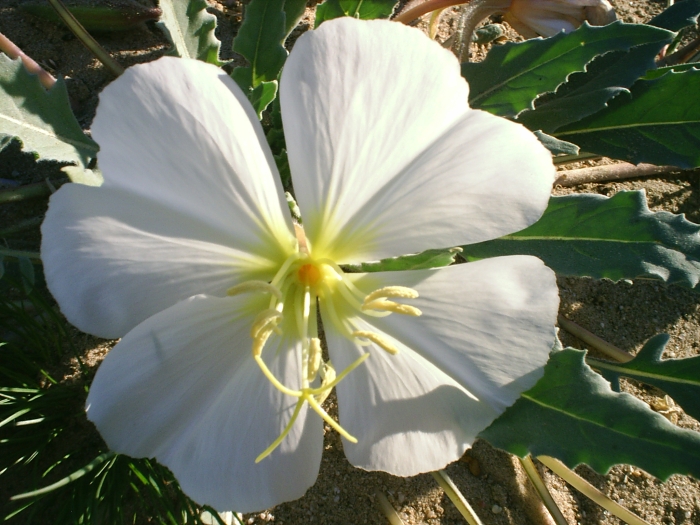Birdcage Evening Primrose
(Oenothera deltoides)
Birdcage Evening Primrose (Oenothera deltoides)
/
/

Bugguyak (talk)
Public domain













































Estimated Native Range
Summary
The Birdcage Evening Primrose is valued for its drought tolerance and unique flowering habit, making it a suitable choice for xeriscaping and desert gardens. It thrives in full sun to part shade and requires minimal water once established, preferring well-drained soils. While it is not commonly used in traditional garden settings, it can be an interesting addition to rock gardens or naturalized areas. Gardeners should note that this plant may self-seed and spread if conditions are favorable. It is not known for significant disease or pest issues, but root rot can occur in poorly drained soils.CC BY-SA 4.0
Plant Description
- Plant Type: Herb
- Height: 0.5-1 feet
- Width: 1-1.5 feet
- Growth Rate: Rapid
- Flower Color: White, Pink
- Flowering Season: Fall, Spring, Summer
- Leaf Retention: Evergreen, Semi-Deciduous
Growth Requirements
- Sun: Full Sun, Part Shade
- Water: Low
- Drainage: Medium
Common Uses
Bee Garden, Bird Garden, Butterfly Garden, Deer Resistant, Drought Tolerant, Fragrant, Groundcover, Hummingbird Garden, Low Maintenance, Rabbit Resistant, Showy Flowers
Natural Habitat
Native to desert washes, sandy plains, and scrublands in the Western United States and Northern Mexico
Other Names
Common Names: Basket Evening-Primrose, Birdcage Evening-Primrose, Desert-Lantern, Lion-In-A-Cage, Devil’s-Lantern, Birdcage Eveningprimrose, Dune Primrose, Devil’s Lantern
Scientific Names: , Oenothera deltoides, Oenothera deltoides var. deltoides, Oenothera deltoides var. typica, Oenothera deltoides f. floccosa, Oenothera albicaulis var. decumbens, Oenothera deltoides f. glabrata,
GBIF Accepted Name: Oenothera deltoides Torr. & Frém.